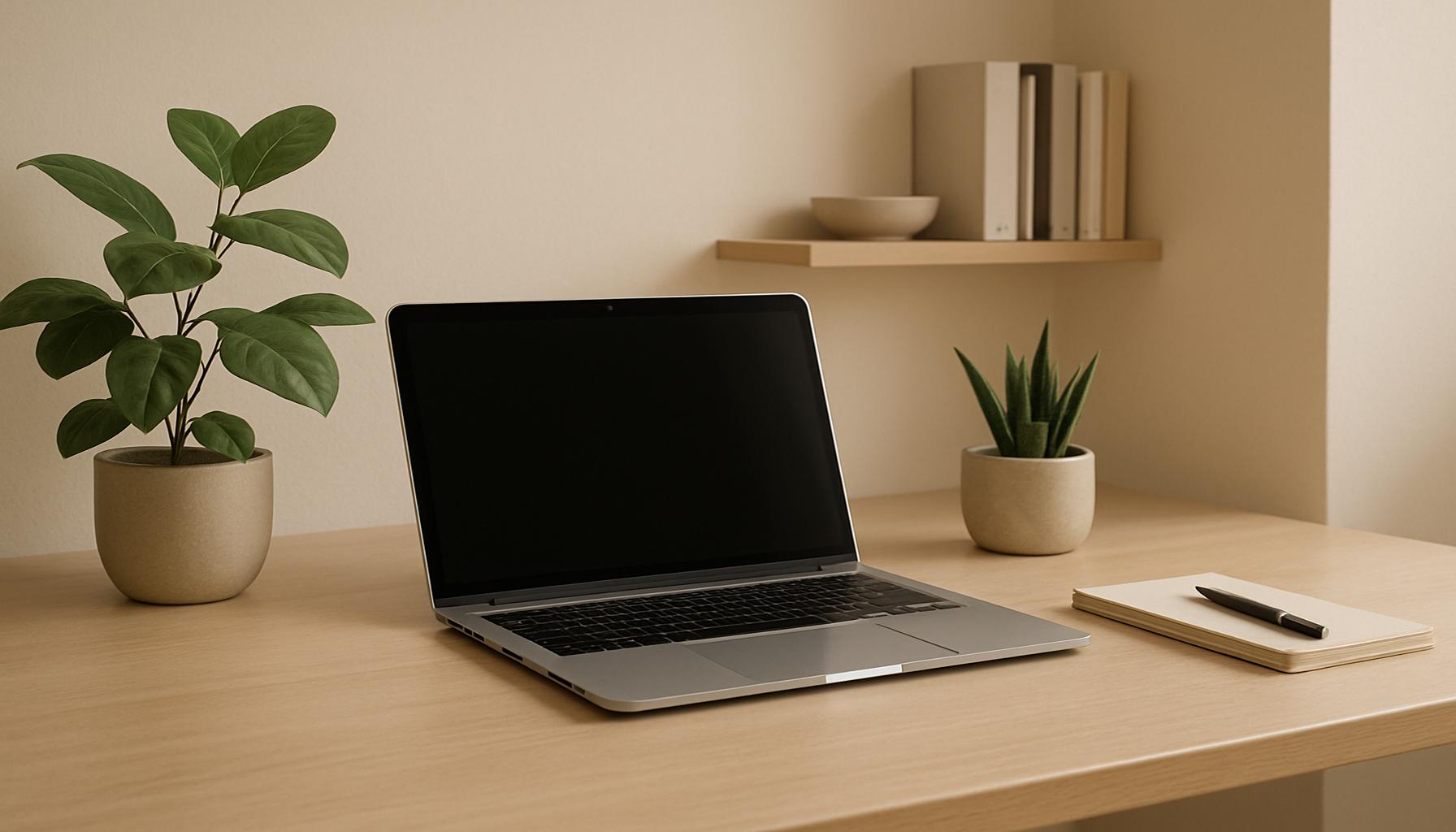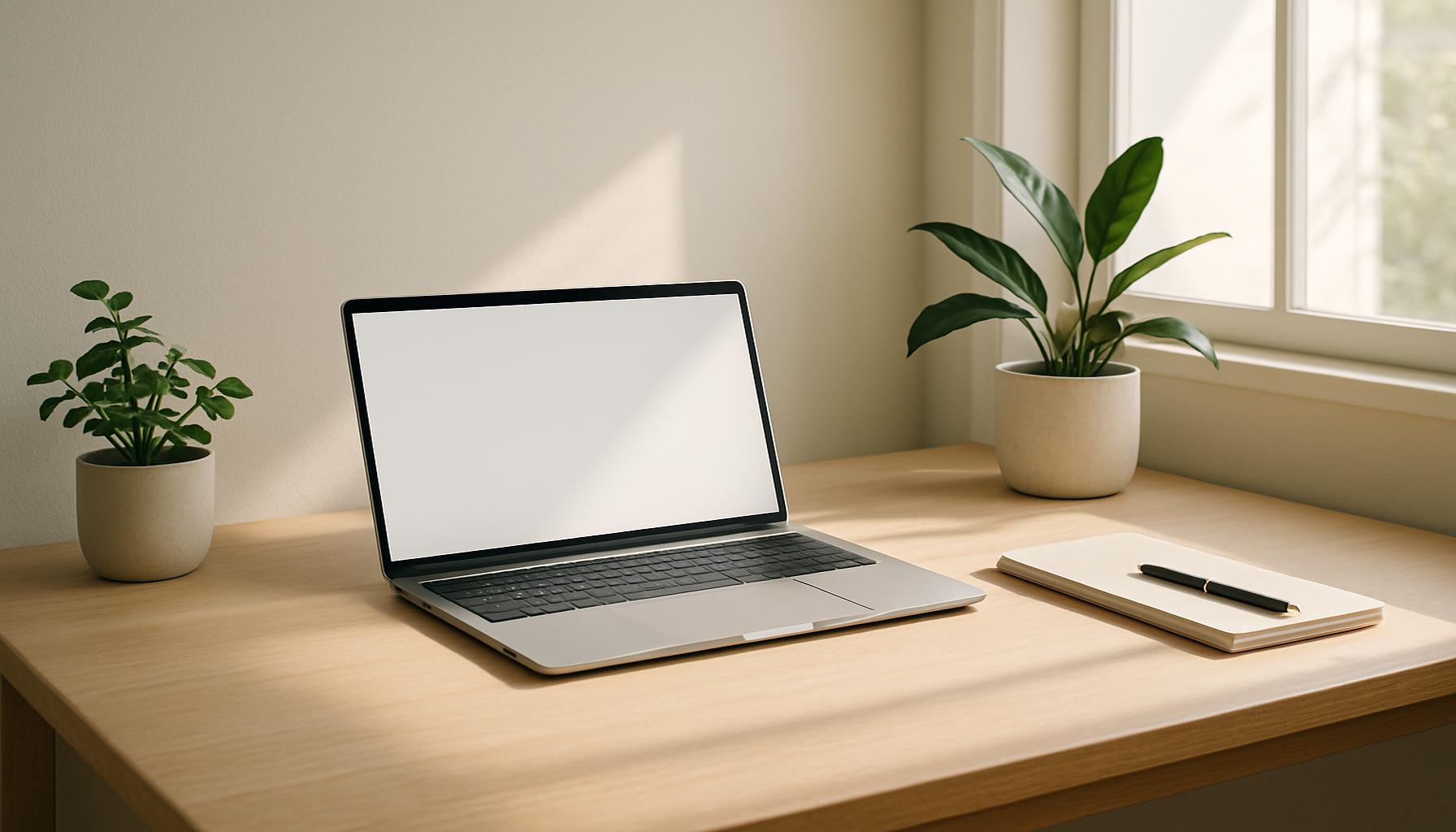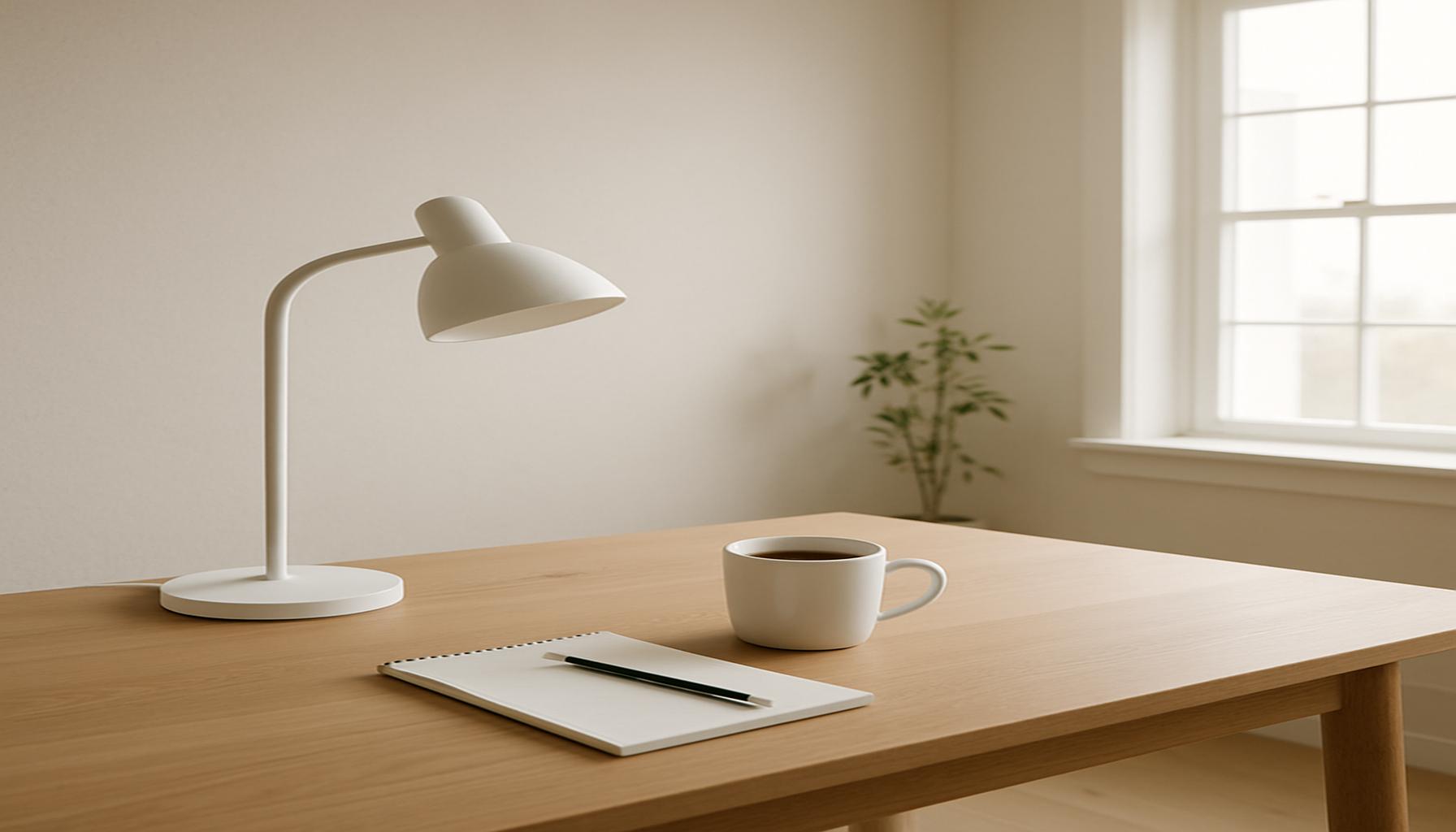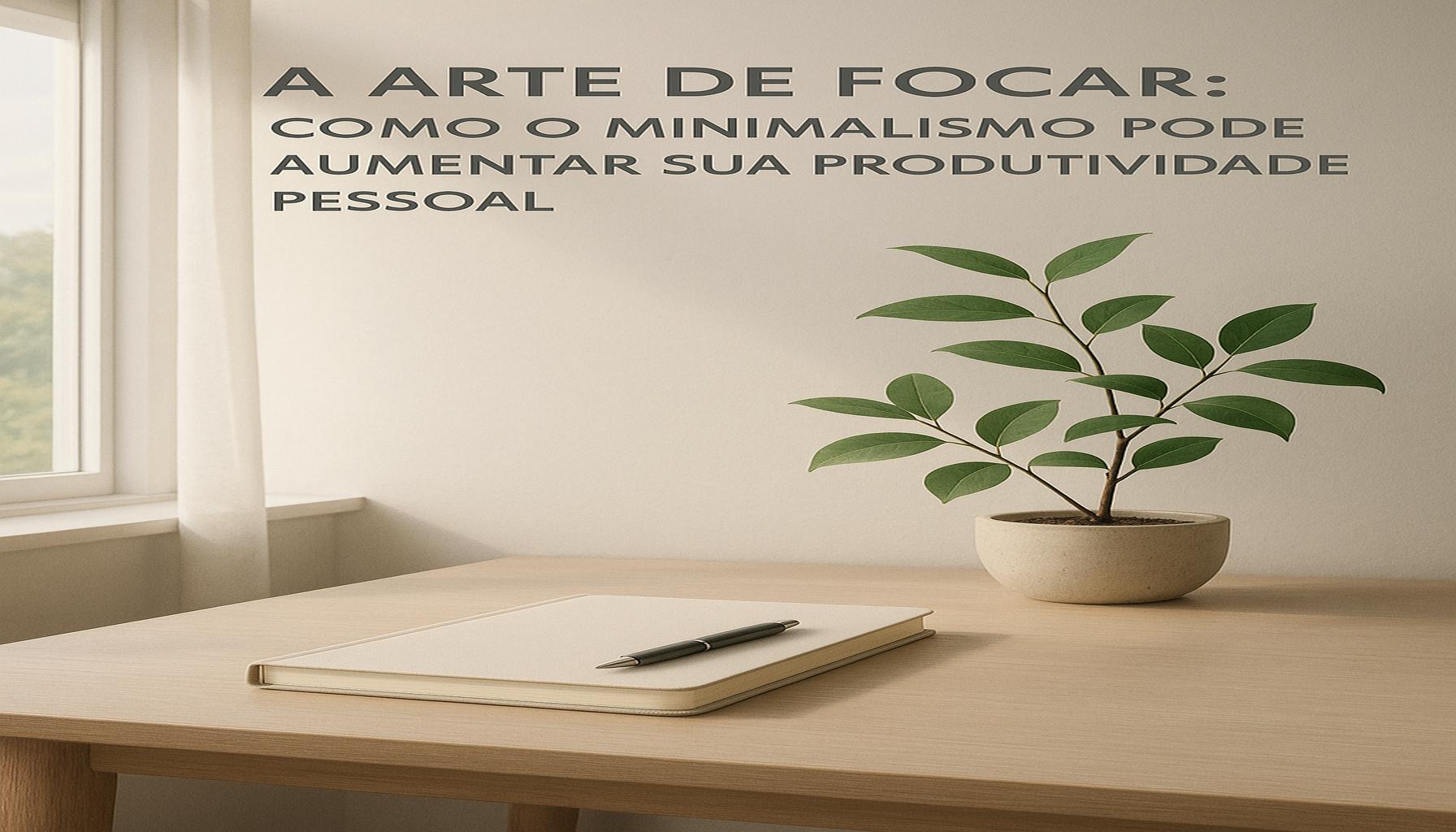Creating a Minimalist Workspace: Tips to Improve Concentration and Efficiency

Creating Focus in Simplicity
In today’s fast-paced world, creating a minimalist workspace has gained tremendous popularity. The cluttered desk aesthetic is fading, making way for environments that foster concentration and efficiency. Embracing minimalism in your workspace isn’t merely a design choice—it’s a strategic framework for elevating productivity and mental clarity.
Research shows that a clean and organized workspace can significantly affect your focus. A study from the Princeton University Neuroscience Institute indicates that clutter can overload the visual cortex, leading to decreased focus and reduced ability to process information effectively. In fact, individuals working in tidy environments report feeling more in control and less stressed, underlining how important an organized workspace is for mental well-being.
Here are some compelling reasons to consider a minimalist approach:
- Reduces distractions, allowing for clearer thinking. With fewer items to visually navigate, your brain is less likely to become overwhelmed.
- Enhances creativity by simplifying visual stimuli. A clean space allows for greater cognitive flexibility, encouraging innovative ideas to flow.
- Promotes better time management through streamlined workflows. Having only the essentials within arm’s reach reduces time lost to searching for tools or materials.
Implementing a minimalist workspace involves thoughtful choices about the items you keep and the layout you design. Start by assessing each item on your desk; ask yourself if it serves a purpose or brings you joy. Consider these essential features for an effective minimal workspace:
- A single, uncluttered desk surface that allows ample space for your laptop and any necessary documents, creating a focused environment.
- Quality, multi-functional furniture, such as a desk with built-in storage and a chair that provides ergonomic support without sacrificing style.
- Proper lighting to reduce eye strain and foster a bright, inviting atmosphere. Natural light is particularly beneficial, as it can improve mood and energy levels.
Curating your environment to focus on essential tools can lead to transformative results. For example, using a cable organizer can instantly create a tidier appearance, while a simple plant can enhance air quality and add a touch of nature to your workspace aesthetic. The objective is to cultivate an atmosphere that supports your personal work habits. By being mindful of your surroundings and minimizing visual chaos, you can unlock higher levels of productivity.
Prepare to explore practical tips on how to improve concentration and efficiency by revisiting your workspace layout. Allocating time to reassess and redesign your workspace could very well yield benefits that extend beyond mere performance—ushering in an era of tranquility and focus amidst the demands of modern life.
DIVE DEEPER: Click here to simplify your online life
Maximizing Your Minimalist Workspace
To truly harness the benefits of a minimalist workspace, it is vital to implement specific strategies that not only declutter your surroundings but also enhance your productivity. Here are several important tips to consider when optimizing your workspace:
- Declutter Regularly: Establish a routine for decluttering, whether it’s weekly or monthly. Assess items on your desk and remove anything that does not serve a current project or purpose. Keeping less is key—aim for the essentials and recycle or discard the rest.
- Prioritize Visibility: Arrange your workspace so that frequently used items are easily accessible. Invest in desk organizers or drawer systems that promote a streamlined and tidy work environment. This minimizes the time spent searching for necessary tools, allowing for a smoother workflow.
- Incorporate Technology Wisely: Leverage technology to minimize physical clutter. Use digital note-taking apps such as Evernote or Notion to keep track of ideas and tasks without needing stacks of paper. A paperless system reduces clutter and can increase your efficiency.
- Personalize Within Limits: While minimalism emphasizes simplicity, a touch of personalization can make your workspace more inviting. Choose one or two items, such as a framed photo or a single decorative item that inspires you, without overwhelming the space.
- Noise Management: Create a serene auditory environment. Consider using sound-absorbing panels or playing soft instrumental music to reduce noise distractions. A quiet environment can significantly enhance your focus, as sounds can often detract from concentration.
Focusing on these elements will support a cohesive and refined workspace that fosters a strong sense of productivity. Additionally, the arrangement of your workspace can play a crucial role in facilitating concentration and efficiency. Here are a few layout tips:
- Position Your Desk Strategically: Place your desk facing a window or a calming view if possible. Natural scenery not only uplifts mood but also helps to redirect focus when needed.
- Use Zoning Techniques: Dedicate specific areas of your workspace for particular tasks, such as a creative zone equipped with materials for brainstorming and a separate area for administrative work. This spatial arrangement will cue your brain each time you move to a different zone, reinforcing your focus.
By thoughtfully considering both the items you include and how they are arranged, you open the door to a more efficient and pleasing workspace. Remember, the goal of a minimalist workspace is not just to reduce clutter but to create a functional environment that optimally supports your work habits. As you embark on this journey of creating a minimalist workspace, take the time to evaluate your current setup, and explore innovative ways to enhance your productivity.
| Advantage | Description |
|---|---|
| Enhanced Focus | Minimizing distractions helps create a work environment that promotes enhanced focus. |
| Increased Productivity | A clear workspace allows for fewer interruptions, leading to increased productivity throughout the day. |
Creating a minimalist workspace has profound implications for your ability to concentrate and perform efficiently at tasks. The first advantage, **enhanced focus**, arises from reducing clutter and unnecessary distractions in your immediate environment. When you have less information vying for your attention, it’s easier to concentrate on the task at hand. This allows your brain to allocate more cognitive resources to the job, thus improving your performance.Moreover, a minimalist setup encourages an increase in productivity. With an environment that fosters minimal interruptions, you can enter a state of deep work, which is essential for completing complex tasks. The fewer the distractions, the more seamlessly you can flow between tasks, ultimately leading to a more fulfilling workday. As you redesign your workspace with minimalism in mind, consider how these advantages align with your goals for efficiency and concentration.
DIVE DEEPER: Click here to discover the importance of focus
Enhancing Focus with Mindful Practices
While decluttering and strategically arranging your physical space are essential steps towards creating a minimalist workspace, integrating mindful practices can significantly bolster your concentration and efficiency. Here are some key strategies to keep in mind:
- Implement the Pomodoro Technique: This time-management method encourages sustained productivity by dividing work into intervals, typically 25 minutes long, followed by short breaks of 5 minutes. After completing four sessions, take a longer break of 15-30 minutes. This approach maintains focus by providing regular intervals for rest, allowing you to recharge and return to your tasks with renewed energy.
- Prioritize Tasks with a Daily Planner: Use a daily planner or digital task manager to outline your objectives for the day. By visualizing your to-do list, you can prioritize tasks effectively, allocate time more efficiently, and ensure that you are working on activities that align with your most critical objectives.
- Practice Mindfulness Techniques: Incorporate short mindfulness exercises, such as deep-breathing or meditation, to clear your mind and enhance focus. Even setting aside five minutes in the morning or during the day to practice mindfulness can promote a sense of calm, allowing you to tackle your work with greater clarity and intention.
- Limit Multitasking: While it may seem efficient, multitasking can lead to decreased overall productivity and diminished focus. Instead, commit to completing one task at a time. This laser focus not only enhances the quality of your work but also helps prevent the overwhelm that often stems from juggling multiple responsibilities.
In addition to these mindful practices, consider implementing tools and resources that align with your minimalist philosophy:
- Leverage Productivity Apps: Explore apps designed to enhance productivity, such as Trello for project management or Todoist for task tracking. These resources help digitalize your organizational system, keeping your workspace clutter-free and your mind organized.
- Create a Calm Color Palette: The colors in your workspace play a significant role in your mood and concentration. Opt for calming and neutral tones to encourage focus, such as soft blues, greens, and grays. These colors have been shown to promote relaxation and creativity, further enhancing your workspace.
- Stay Hydrated and Nourished: Never overlook the importance of hydration and nutrition in maintaining focus. Keep a water bottle at your desk and consider healthy snacks like nuts or fruits to fuel your brain. Proper nutrition supports cognitive function, allowing you to maintain concentration and energy levels throughout the day.
Lastly, maintaining a growth mindset is crucial to your success in a minimalist workspace. Embrace the idea of continuous improvement. Periodically assess your workspace and work habits to identify areas for further enhancement. Experiment with different layouts and techniques; what works for one person may not resonate with another.
By not only focusing on physical aspects but also integrating practical and mindful strategies, you can create a truly effective environment that transforms your work life. The goal is to sculpt a space that resonates with your personal productivity style, paving the way for greater success in your work endeavors.
DIVE DEEPER: Click here to discover essential tips
Conclusion: Embracing a Minimalist Workspace for Greater Productivity
In a world filled with distractions and clutter, creating a minimalist workspace emerges as a transformative approach to enhance concentration and efficiency. As we’ve explored, the journey starts with decluttering your physical environment, which lays the groundwork for a clear mind and focused work. Integrating mindful practices, such as the Pomodoro Technique and task prioritization, further amplifies your ability to maintain sustained productivity throughout your day. By embracing these techniques, you not only streamline your workflow but also cultivate a sense of calm and control amidst the chaos of daily responsibilities.
It’s essential to recognize that a minimalist workspace is not a one-size-fits-all solution. Customizing your environment to reflect your unique preferences and comfort can lead to more profound and impactful results. From color palettes that evoke creativity to mindful habits that foster mental clarity, every adjustment contributes to creating an oasis of productivity.
As you embark on this path, consider the value of ongoing evaluation and adaptation of your workspace strategy. Continuously seek out new methodologies, tools, and techniques that resonate with you. By remaining open to experimentation and growth, you can cultivate a workspace that not only increases your efficiency but also inspires creativity and innovation. Ultimately, the effective blend of minimalism and mindful practices empowers you to not only work smarter but also thrive in your personal and professional life.


